Abstract
Lymphoid cells from unprimed high responder (C57BL/10) and low responder mice (B10.Br, B10.A, CBA) to (T,G)-A-L and high responder (B10, B10.A) and non-responder (B10.G, DBA/I) mice to GAT can be induced to form antigen specific T-helper cells in vitro under identical culture conditions. The helper cells induced from high and low or non-responder mice appear to be identical in efficiency, antigen concentration requirement for induction and induction kinetics.
Full text
PDF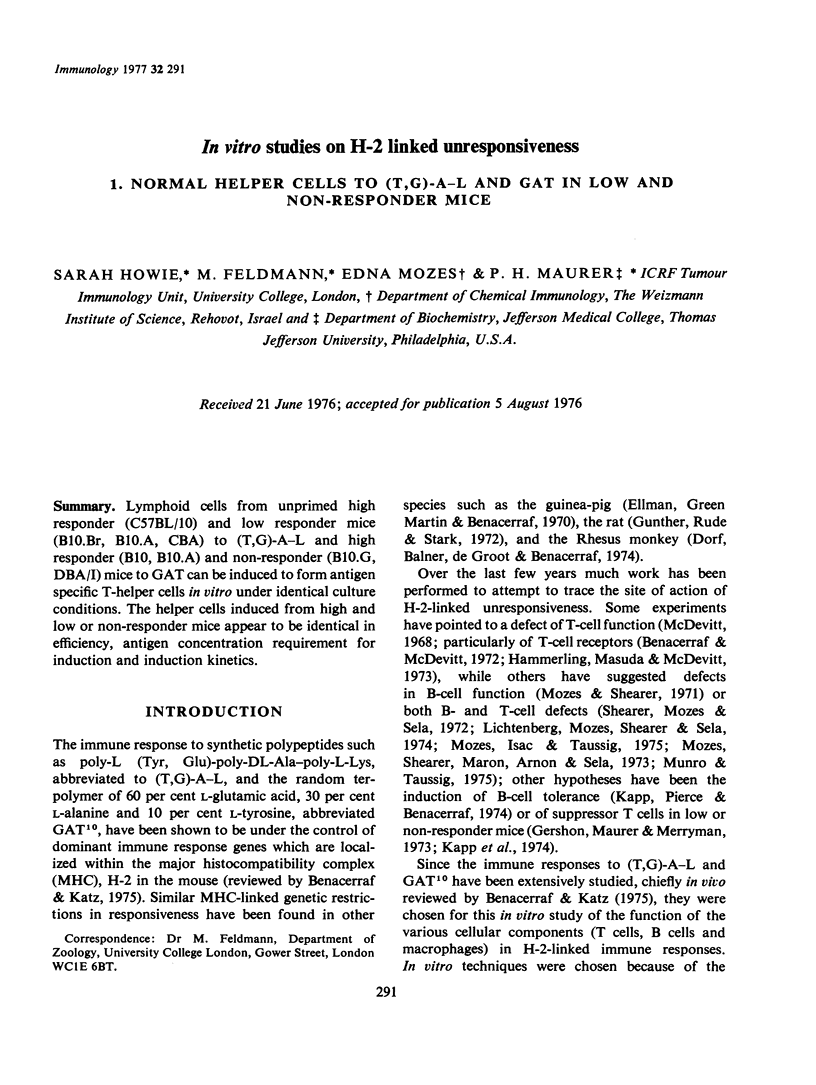
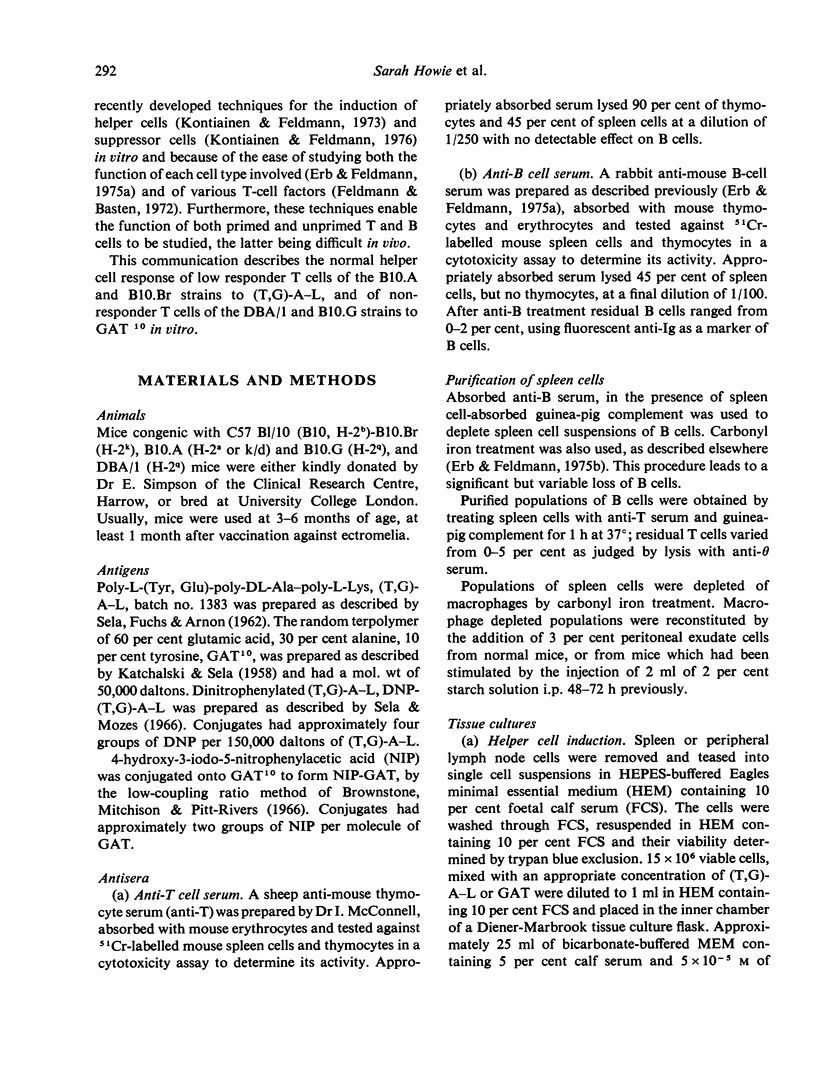
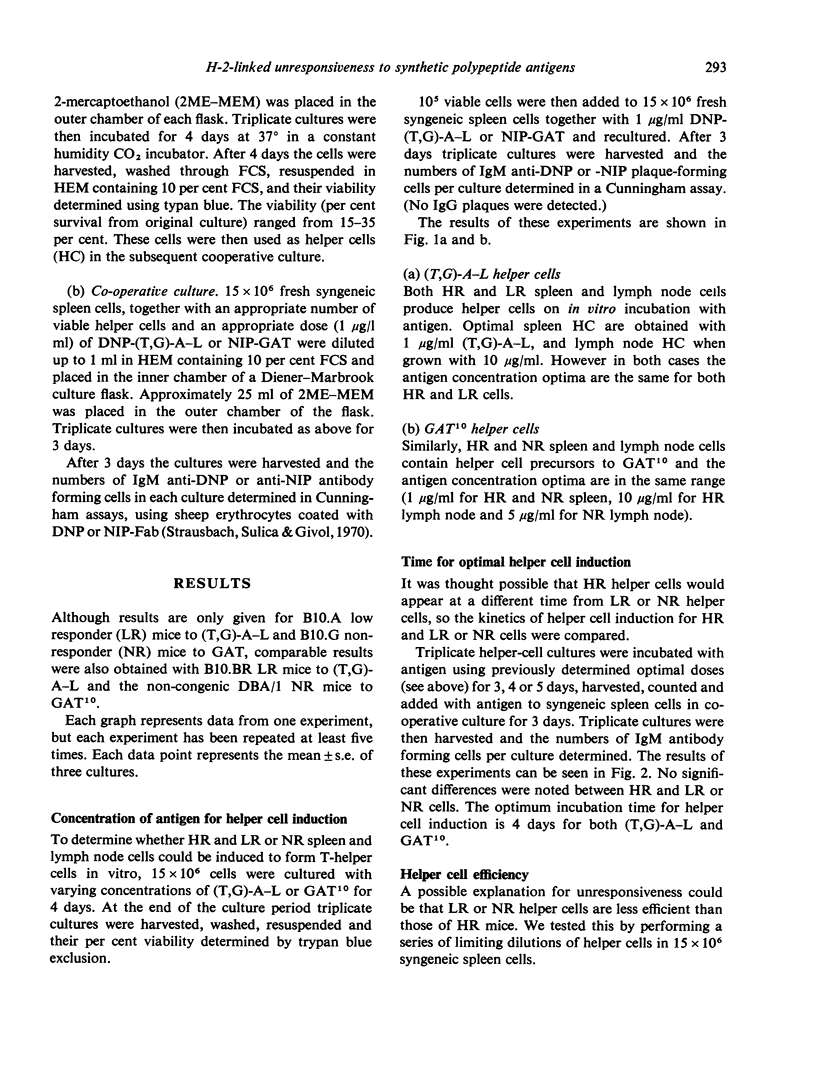
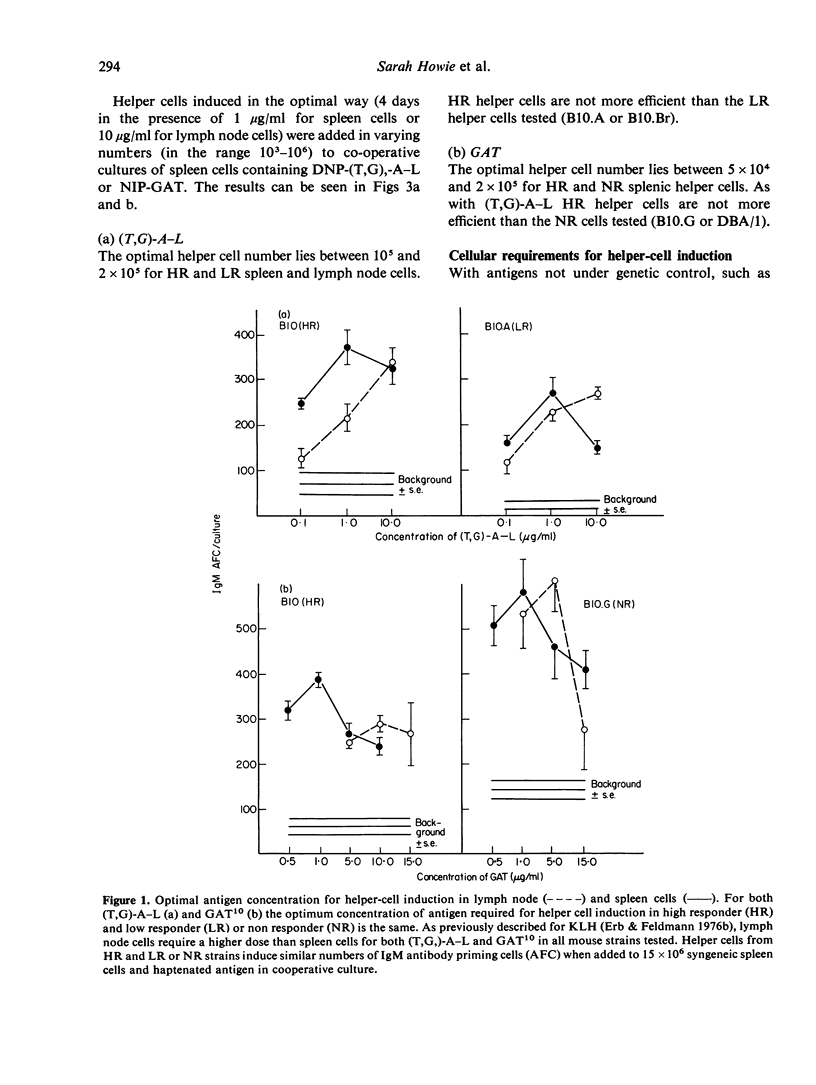
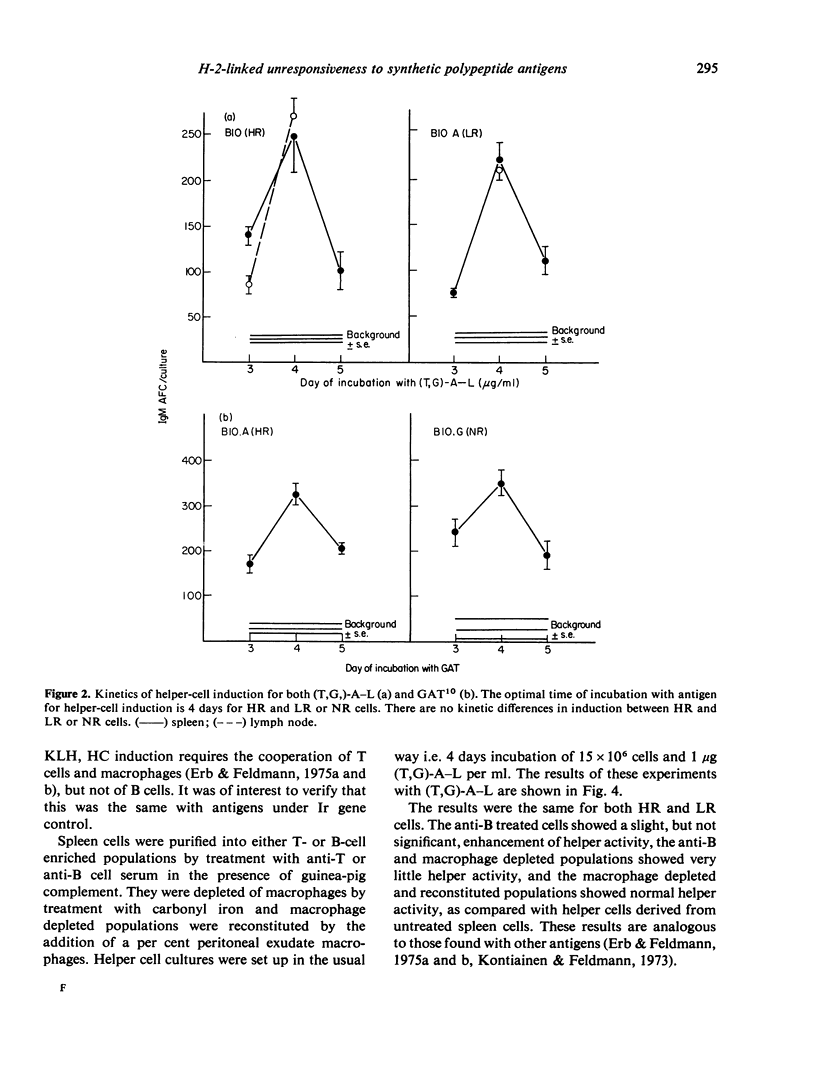
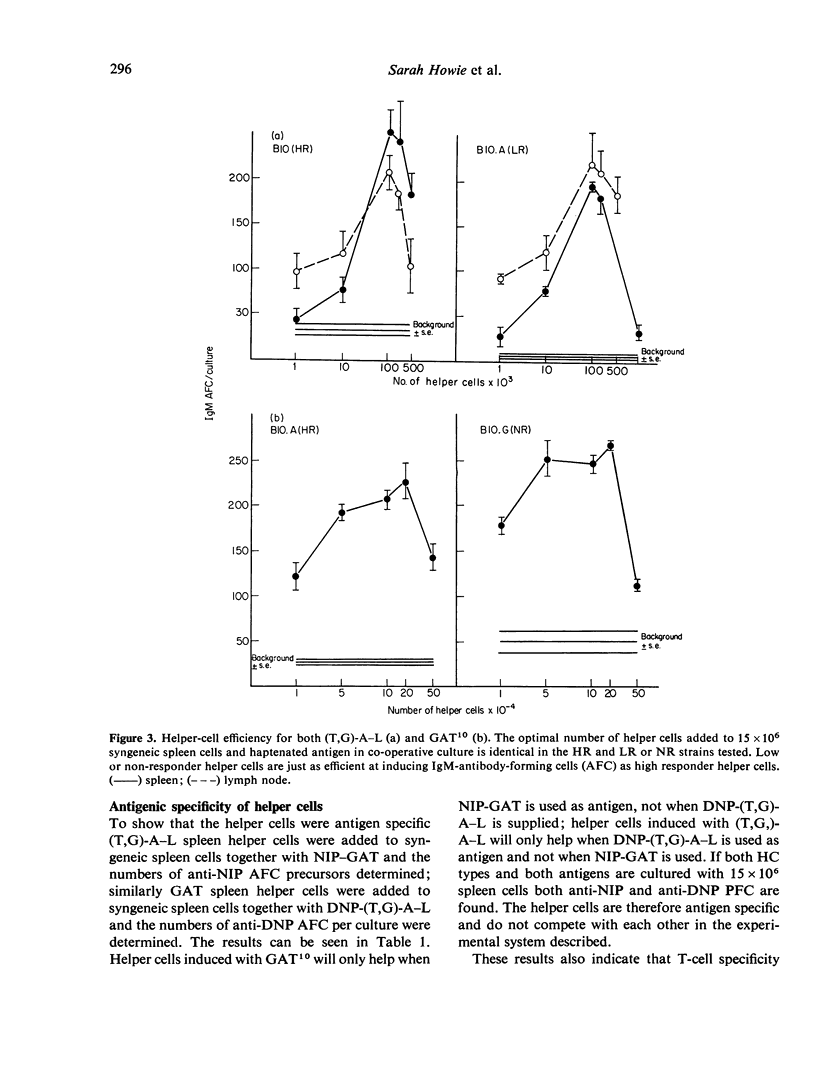
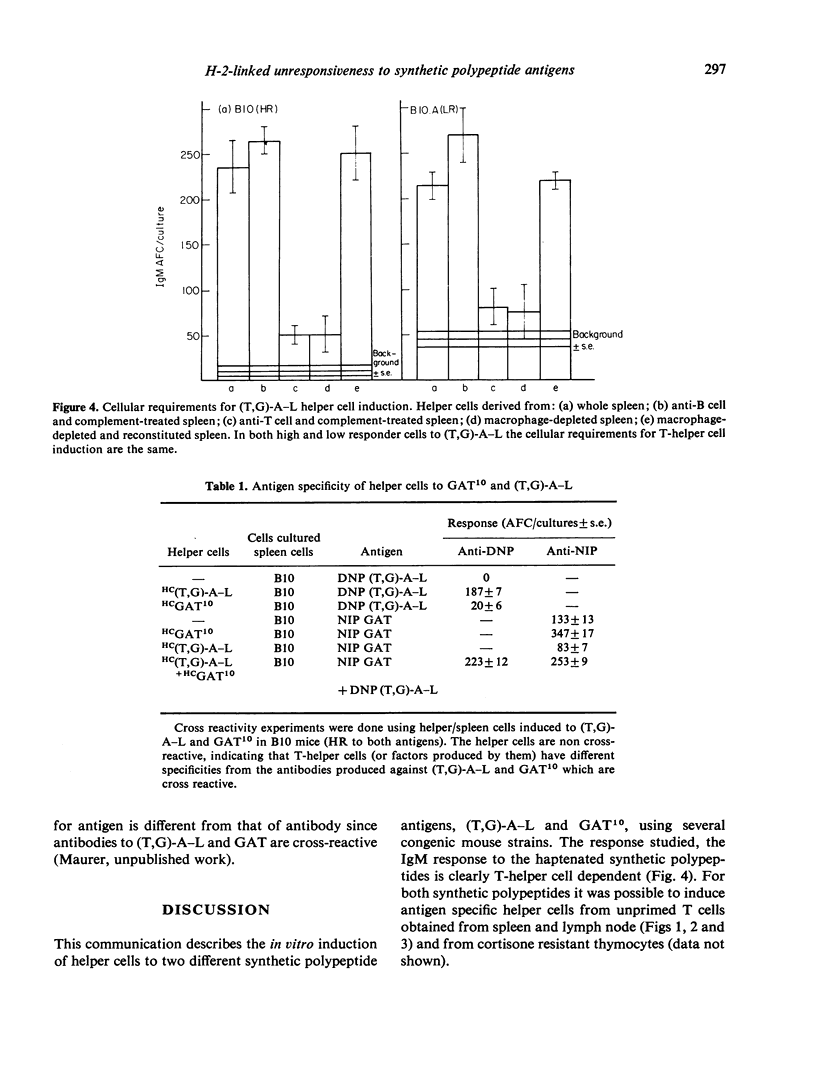
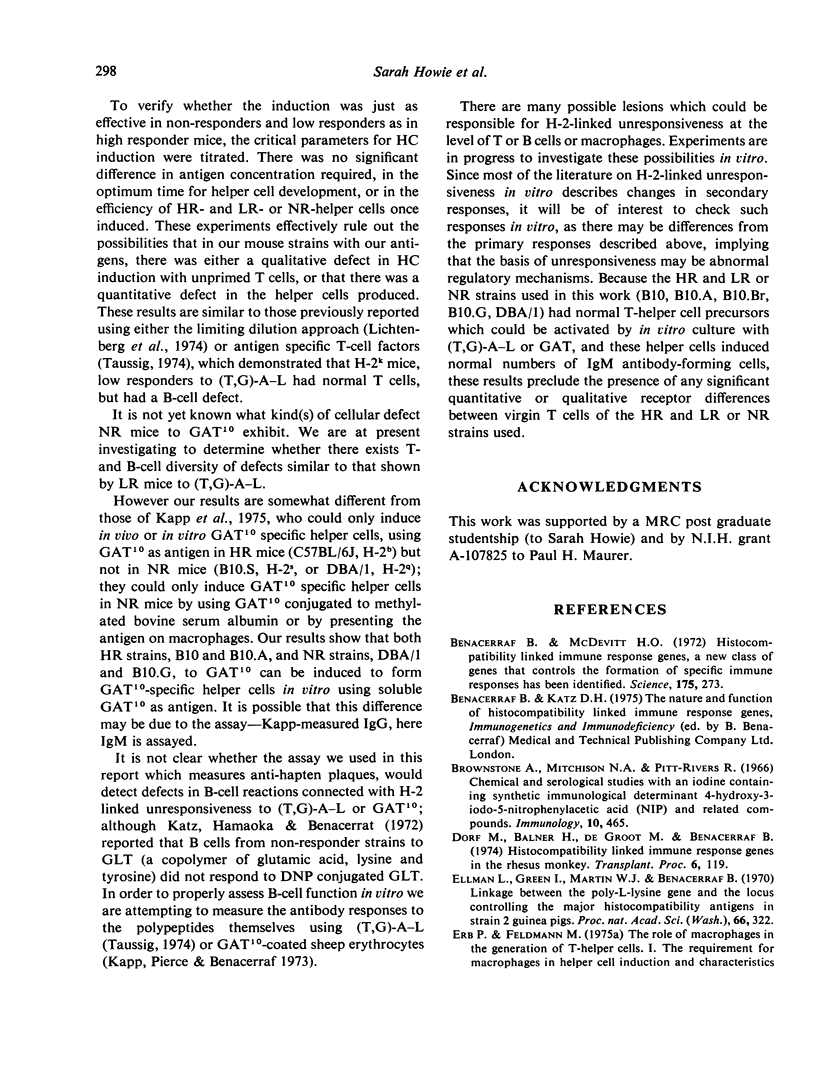

Selected References
These references are in PubMed. This may not be the complete list of references from this article.
- Benacerraf B., McDevitt H. O. Histocompatibility-linked immune response genes. Science. 1972 Jan 21;175(4019):273–279. doi: 10.1126/science.175.4019.273. [DOI] [PubMed] [Google Scholar]
- Brownstone A., Mitchison N. A., Pitt-Rivers R. Chemical and serological studies with an iodine-containing synthetic immunological determinant 4-hydroxy-3-iodo-5-nitrophenylacetic acid (NIP) and related compounds. Immunology. 1966 May;10(5):465–479. [PMC free article] [PubMed] [Google Scholar]
- Dorf M. E., Balner H., de Groot M. L., Benacerraf B. Histocompatibility-linked immune-response genes in the rhesus monkey. Transplant Proc. 1974 Jun;6(2):119–123. [PubMed] [Google Scholar]
- Ellman L., Green I., Martin W. J., Benacerraf B. Linkage between the poly-L-lysine gene and the locus controlling the major histocompatibility antigens in strain 2 guinea pigs. Proc Natl Acad Sci U S A. 1970 Jun;66(2):322–328. doi: 10.1073/pnas.66.2.322. [DOI] [PMC free article] [PubMed] [Google Scholar]
- Erb P., Feldmann M. Role of macrophages in in vitro induction of T-helper cells. Nature. 1975 Mar 27;254(5498):352–354. doi: 10.1038/254352a0. [DOI] [PubMed] [Google Scholar]
- Erb P., Feldmann M. The role of macrophages in the generation of T-helper cells. I. The requirement for macrophages in helper cell induction and characteristics of the macrophage-T cell interaction. Cell Immunol. 1975 Oct;19(2):356–367. doi: 10.1016/0008-8749(75)90217-8. [DOI] [PubMed] [Google Scholar]
- Gershon R. K., Maurer P. H., Merryman C. F. A cellular basis for genetically controlled immunologic unresponsiveness in mice: tolerance induction in T-cells. Proc Natl Acad Sci U S A. 1973 Jan;70(1):250–254. doi: 10.1073/pnas.70.1.250. [DOI] [PMC free article] [PubMed] [Google Scholar]
- Günther E., Rüde E., Stark O. Antibody response in rats to the synthetic polypeptide (T,G)-A--L genetically linked to the major histocompatibility system. Eur J Immunol. 1972 Apr;2(2):151–155. doi: 10.1002/eji.1830020211. [DOI] [PubMed] [Google Scholar]
- Hämmerling G. J., Masuda T., McDevitt H. O. Genetic control of the immune response. Frequency and characteristics of antigen-binding cells in high and low responder mice. J Exp Med. 1973 May 1;137(5):1180–1200. doi: 10.1084/jem.137.5.1180. [DOI] [PMC free article] [PubMed] [Google Scholar]
- Kapp J. A., Pierce C. W., Benacerraf B. Genetic control of immune responses in vitro. 3. Tolerogenic properties of the terpolymer L-glutamic acid 60-L-alanine30-L-tyrosine10 (GAT) for spleen cells from nonresponder (H-2s and H-2q) mice. J Exp Med. 1974 Jul 1;140(1):172–184. doi: 10.1084/jem.140.1.172. [DOI] [PMC free article] [PubMed] [Google Scholar]
- Kapp J. A., Pierce C. W., Benacerraf B. Genetic control of immune responses in vitro. I. Development of primary and secondary plaque-forming cell responses to the random terpolymer 1-glutamic acid 60-1-alanine30-1-tyrosine10 (GAT) by mouse spleen cells in vitro. J Exp Med. 1973 Nov 1;138(5):1107–1120. doi: 10.1084/jem.138.5.1107. [DOI] [PMC free article] [PubMed] [Google Scholar]
- Katz D. H., Hamaoka T., Benacerraf B. Immunological tolerance in bone marrow-derived lymphocytes. I. Evidence for an intracellular mechanism of inactivation of hapten-specific precursors of antibody-forming cells. J Exp Med. 1972 Dec 1;136(6):1404–1429. doi: 10.1084/jem.136.6.1404. [DOI] [PMC free article] [PubMed] [Google Scholar]
- Kontianen S., Feldmann M. Induction of specific helper cells in vitro. Nat New Biol. 1973 Oct 31;245(148):285–286. doi: 10.1038/newbio245285a0. [DOI] [PubMed] [Google Scholar]
- McDevitt H. O. Genetic control of the antibody response. 3. Qualitative and quantitative characterization of the antibody response to (T,G)-A--L in CBA and C57 mice. J Immunol. 1968 Mar;100(3):485–492. [PubMed] [Google Scholar]
- Mozes E., Isac R., Taussig M. J. Antigen-specific T-cell factors in the genetic control of the immune response to poly(Tyr,Glu)-polyDLAla--polyLys. Evidence for T- and B-cell defects in SJL mice. J Exp Med. 1975 Mar 1;141(3):703–707. doi: 10.1084/jem.141.3.703. [DOI] [PMC free article] [PubMed] [Google Scholar]
- Mozes E., Shearer G. M. Contribution of bone marrow cells and lack of expression of thymocytes in genetic controls of immune responses for two immunopotent regions within poly-(Phe,Glu)-poly-Pro--poly-Lys in inbred mouse strains. J Exp Med. 1971 Jul 1;134(1):141–161. doi: 10.1084/jem.134.1.141. [DOI] [PMC free article] [PubMed] [Google Scholar]
- Mozes E., Shearer G. M., Maron E., Arnon R., Sela M. Cellular studies of the genetic control of immune response toward the loop region of lysozyme. J Immunol. 1973 Nov;111(5):1429–1434. [PubMed] [Google Scholar]
- Munro A. J., Taussig M. J. Two genes in the major histocompatibility complex control immune response. Nature. 1975 Jul 10;256(5513):103–106. doi: 10.1038/256103a0. [DOI] [PMC free article] [PubMed] [Google Scholar]
- SELA M., FUCHS S., ARNON R. Studies on the chemical basis of the antigenicity of proteins. 5. Synthesis, characterization and immunogenicity of some multichain and linear polypeptides containing tyrosine. Biochem J. 1962 Oct;85:223–235. doi: 10.1042/bj0850223. [DOI] [PMC free article] [PubMed] [Google Scholar]
- Sela M., Mozes E. Dependence of the chemical nature of antibodies on the net electrical charge of antigens. Proc Natl Acad Sci U S A. 1966 Feb;55(2):445–452. doi: 10.1073/pnas.55.2.445. [DOI] [PMC free article] [PubMed] [Google Scholar]
- Shearer G. M., Mozes E., Sela M. Contribution of different cell types to the genetic control of immune responses as a function of the chemical nature of the polymeric side chains (poly-L-prolyl and poly-DL-alanyl) of synthetic immunogens. J Exp Med. 1972 May 1;135(5):1009–1027. doi: 10.1084/jem.135.5.1009. [DOI] [PMC free article] [PubMed] [Google Scholar]
- Taussig M. J. T cell factor which can replace T cells in vivo. Nature. 1974 Mar 15;248(445):234–236. doi: 10.1038/248234a0. [DOI] [PubMed] [Google Scholar]


